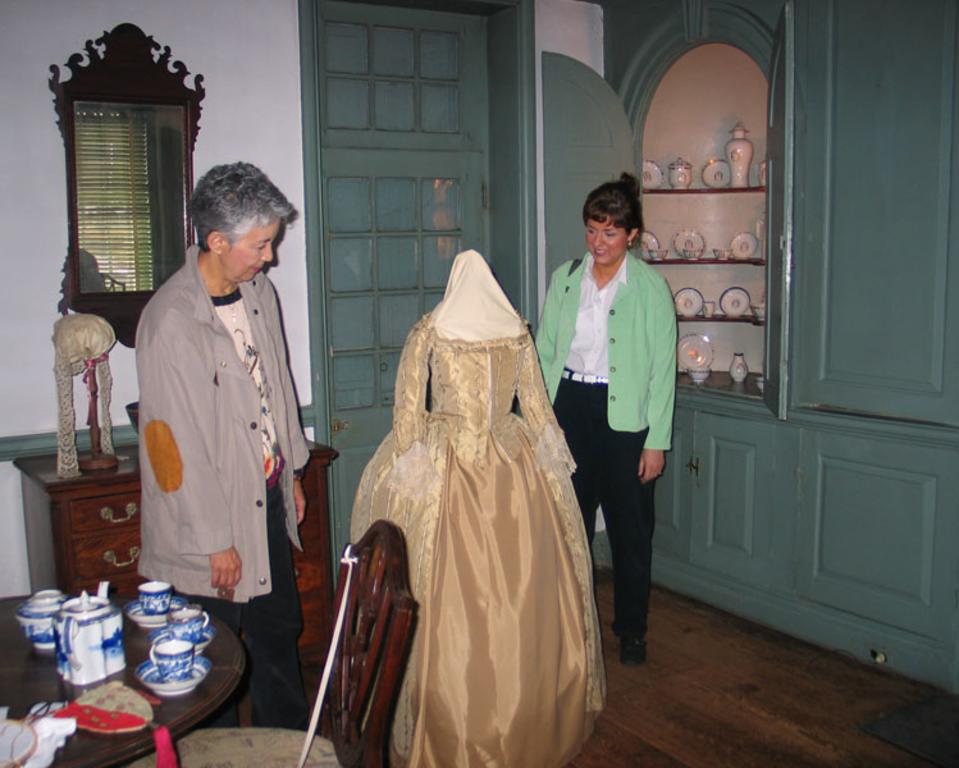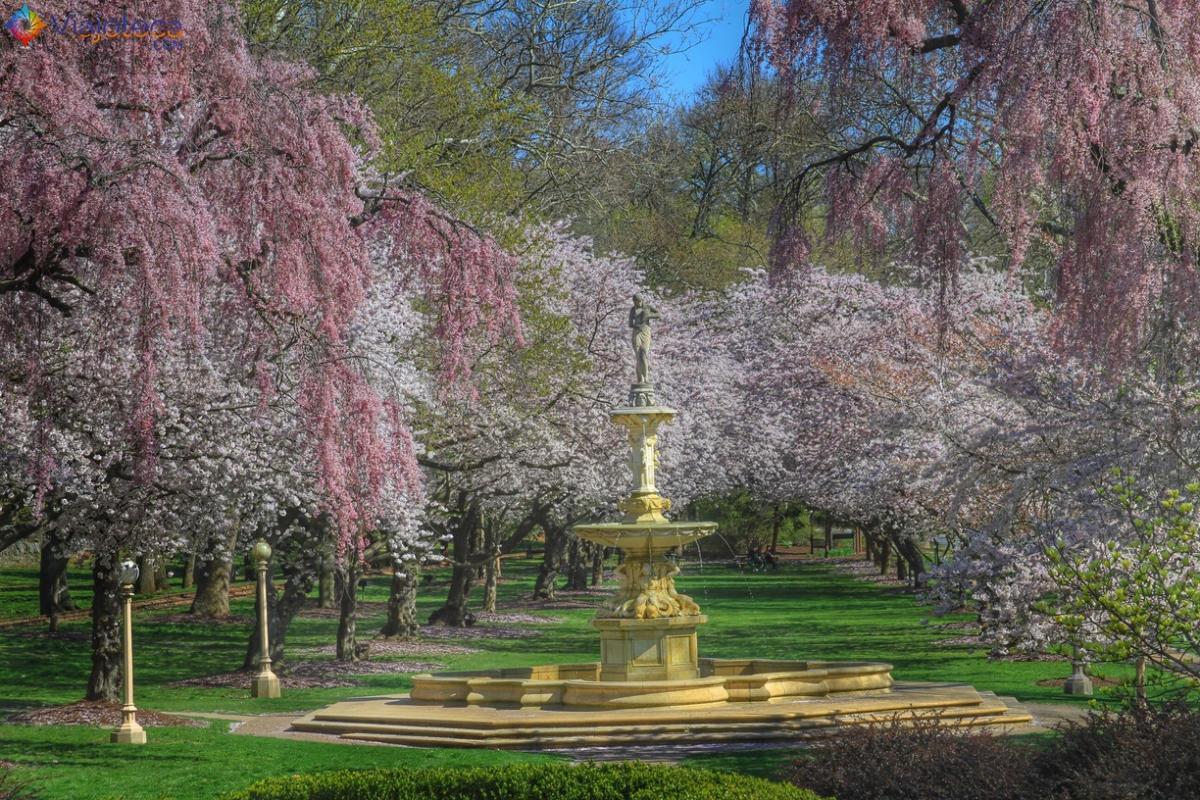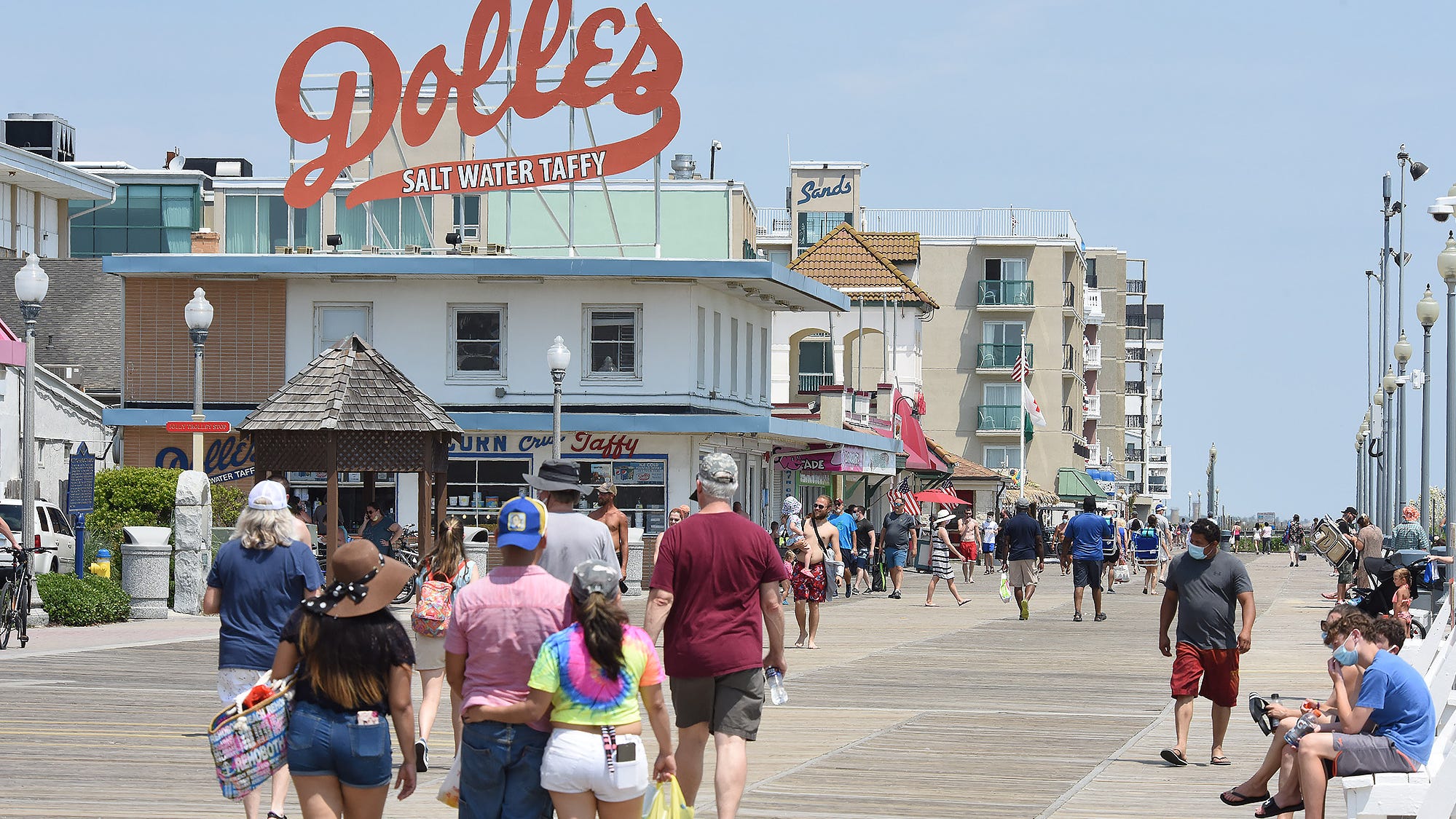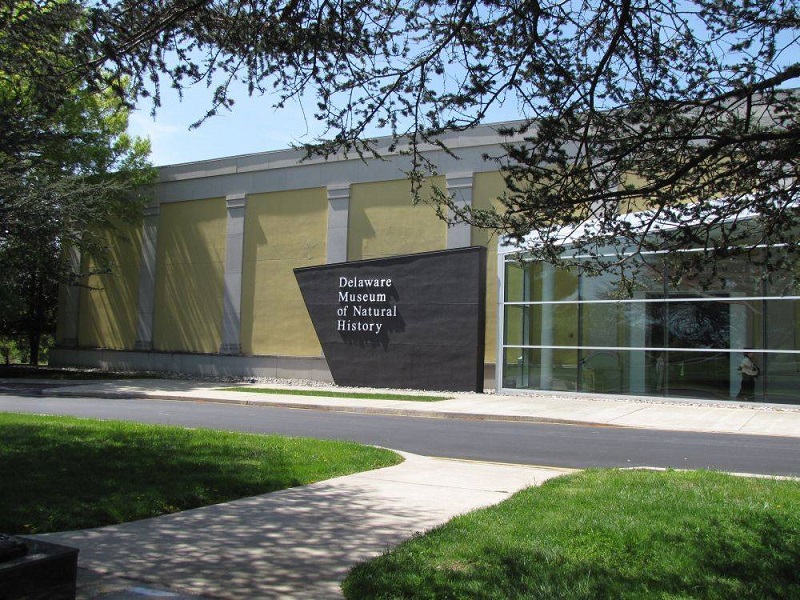One of the many vagaries (and points of interest) about this list is that there is not a clear pattern or consistency in choosing the recommended sites from one state to the next. Sometimes a famous vacation state will have four recommendations, two of which are fairly obscure, while for Delaware we are given 10 suggestions, many of them dubious even if they exist in modern life at all.
1. Amstel House, at New Castle, on U.S. Route 13. " A typical colonial house, with many exhibits, including complete kitchen furnishings of colonial times."
Mere steps from the Delaware River. Though not open currently, it looks like in normal times tours of the house are given by the New Castle Historical Society. I remember reading one time that New Castle and Annapolis--I forget in which order--were the two cities with the most preserved 18th century houses in the United States. I have never been to New Castle, though I spent much of the earlier part of my life not far from there, and have passed by it on the highway hundreds of times. I would like to visit it sometime, as it would remind me of the scenes of my youth, assuming it ever opens again.
I bet Joe Biden has been here.
I haven't spent much time in Wilmington either even though I lived pretty nearby for many years. The city is generally regarded in the Philadelphia area as kind of dump, and to be honest, not particularly safe. The photos of this park look really beautiful though. When I used to go down to Philadelphia with my wife and children more often and we would go around to the various attractions of the area it never occurred to me to go to Delaware, which we could easily have done as a day trip, at all, but these first two sites at least look quite appealing. It looks on the map like I-95 cuts right through the center of the park but I am assuming that the highway is elevated there, as it is for most of its course through that city, if I recall correctly.
3. Elephant Rock, at Talleyville, off U.S. Route 13, 4 miles north of Wilmington. "A large natural formation, resembling an elephant asleep."
While a 1955 guide to the state I found online mentions it, placing it along U.S 202 3.5 miles south of the Pennsylvania border, in a field to the left, in an article from Page 19 of the News Journal of Wilmington, July 8, 1961, about commercial development along the Concord Pike (as route 202 is also called in these parts), it is stated that "(developer) first built a shopping center, with a bowling alley included, then homes. One landmark which stood in the way of progress and had to be blasted, in spite of old timers' protests, was a curious formation know as "Elephant Rock". In shape and size it resembled a slumbering pachyderm."
Goodness.
4. Fiddler's Bridge, at St. George, 6 miles south of New Castle, on U.S. Route 13. "A dark and gloomy place, where, according to legend, a mad Negro fiddler used to sit on the bridge rail, and play sad tunes. One night he fell into the water and was drowned. It is said that if a person drops a silver coin into the water, exactly at midnight, the fiddler will play his violin again."
This may be the modern replacement bridge. I can't really tell.
I actually tried to look for this place a few years ago as a diversion on one of my drives from Philadelphia to Annapolis, as the site is right on the way. There was very little additional information on the internet as to where it might be, and that was from one of the WPA guidebooks from the 1930s. I did follow what clues I could get from that, but the entire stretch of road in question is now quite built up with strip malls and restaurants and so on. There was visible behind one of the shopping malls a hill with hay and some old-looking trees on it and I wondered if there might be something that way, but there was no indication of a bridge or any water there, and I never did even find the river. After about a half-hour of this fruitless quest my family was ready to get back on the road, though I think we stopped at the Wawa in the neighborhood at least.
There is a website called "Haunted Places" which I do not think was up at the time I tried to find the bridge. It states that "the original bridge is long-gone, but the road eventually became U.S. 13 (Du Pont Parkway), and there is still a small bridge there that crosses Scott's Run. No word on whether or not the dime trick still works today." The version of the legend that this site recounts indicates that the fiddler was a local slave who incurred a severe beating and was "never quite the same."
5. Old Dutch House, in New Castle, on U.S. Route 13. "Believed to be the oldest house in the state; built before 1700."
Under the same auspices as the Amstel House (#1 above), the New Castle Historical Society, also currently closed due to the ongoing public health crisis, though hopefully this somewhat celebrated town will be open for sightseeing again soon. The house, which is conceded to be probably the oldest in the state, has a number of noteworthy antiques and looks to me like it would be a pretty invigorating place to visit, as I am still an enthusiast for colonial America and always enjoy visiting one of the haunts of these illustrious forbears.
6. Rehoboth Beach, on the east coast, 5 miles from Lewes, on State Highway 14. "Best known resort in Delaware; fine, sandy beach, swimming, canoeing, horseback riding."
I think I went here once as a very young child but I don't have much memory of it. That would have been sometime in the mid-1970s anyway. It seems to still be pretty popular, one of the mainstay Mid-Atlantic beach experiences. I'm not sure what, if anything, differentiates it from Ocean City, Maryland or the more family-oriented New Jersey beach towns. I'm sure the people watching and the nightlife would be more to my liking than in Miami or Los Angeles, I imagine the people overall are less perfect-looking and more desperate to have fun, more so in some establishments than others. I'd have to find those places. There is also a Joe Biden connection, though that doesn't hold all that much interest for me at the present time. It may someday.
7. Octagonal Schoolhouse, in Leipsic, about 5 miles north of Dover, on State Highway 9. "Odd little stone building, used as a public school until about fifty years ago. Two circles of desks; the outer circle for boys facing the wall; inner circle for girls facing the center."
This is still standing, in a small park by the side of the road, though it doesn't appear that you can go inside or that there is any kind of museum or anything. Apparently the site had fallen into serious disrepair in recent years but some significant restorations were undertaken in 2018-9. This selection as a "place to see in Delaware" falls decidedly on the quirky end of the spectrum I would think, but that is why I like the list. Something this random and unpromotable would never make it on such a list today.
8. Redden State Forest (1,133 acres), between Milford and Georgetown, on U.S. Route 113. "Only large state forest in Delaware; beautiful scenery, trails, picnic areas."
Features a historical lodge that was once a hunting retreat for railroad executives. The lodge is still currently closed. When it is open you can stay there but you have to bring your own sleeping bag or cot. Delaware is one of the flatter states in the country--I believe the high point for elevation is at the end of a cul-de-sac or something like that--so I imagine the trails here are mainly walking around looking at trees and birds (and deer), without the rugged, rocky terrain we are accustomed to in New England.
9. Society of Natural History of Delaware, in Wilmington, on U.S. Route 13. "Museum with collections of birds, plants and minerals."
I cannot tell if this same institution as the Delaware Museum of Natural History, which opened in 1972, as the Society has seemingly disappeared altogether, or at least I cannot find any information about it on the internet. The new museum is currently closed but will be re-opening in 2022 as the Delaware Museum of Nature and Science. A good deal of taxidermy has been put into storage during the Covid interludes while renovations were undertaken, though it looks like some of it at least will be returning to display when the museum re-opens. To be honest I don't see any evidence that the modern museum was ever known by the other name, though I don't know what became of the other collection and space, which seem to have been organized along similar lines.
10. Fenwick Island Lighthouse, 10 miles east of Selbyville, on U.S. Route 113. "80 foot tower; its light can be seen for 15 miles at sea."
This is right on the state line between Delaware and Maryland, and is almost as much an attraction of Ocean City, Maryland as it is of the state of Delaware, which I suppose must take pride of place. The base, which has a small museum and a gift shop, is open for visits most summer mornings from 9a-12p, though there is no climbing. It was constructed in 1858. It was decommissioned in 1978 and sat dark for 4 years. A restoration took place in 1997. If you go to see it, this does not look to be one of those isolated lighthouses looking on a desolate landscape and crashing, iron grey waves. The neighborhood is teeming with all manner of gauche seaside amusements.
So to recap, of the 10 places recommended for visiting in Delaware by the Illustrated World Encyclopedia circa 1963, 6 more or less still exist in the same form and can be visited (in non-Covid times), 2 have completely disappeared, one is still standing and is for the moment being preserved but otherwise nothing, and one (the natural history museum) may still exist but I am not sure it is the same place that is in the book.







/cloudfront-us-east-1.images.arcpublishing.com/tronc/X7KCGSLYYJDU3FW5DTGV5SMAPQ.jpg)








No comments:
Post a Comment